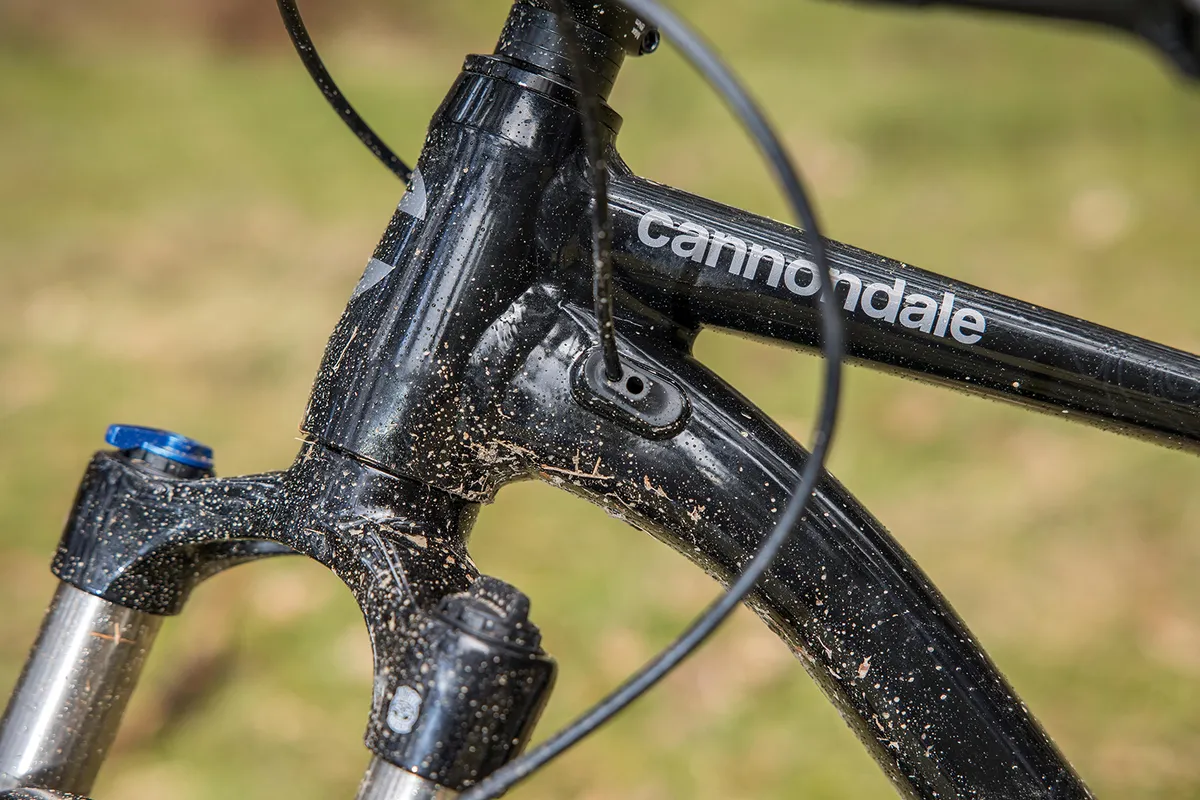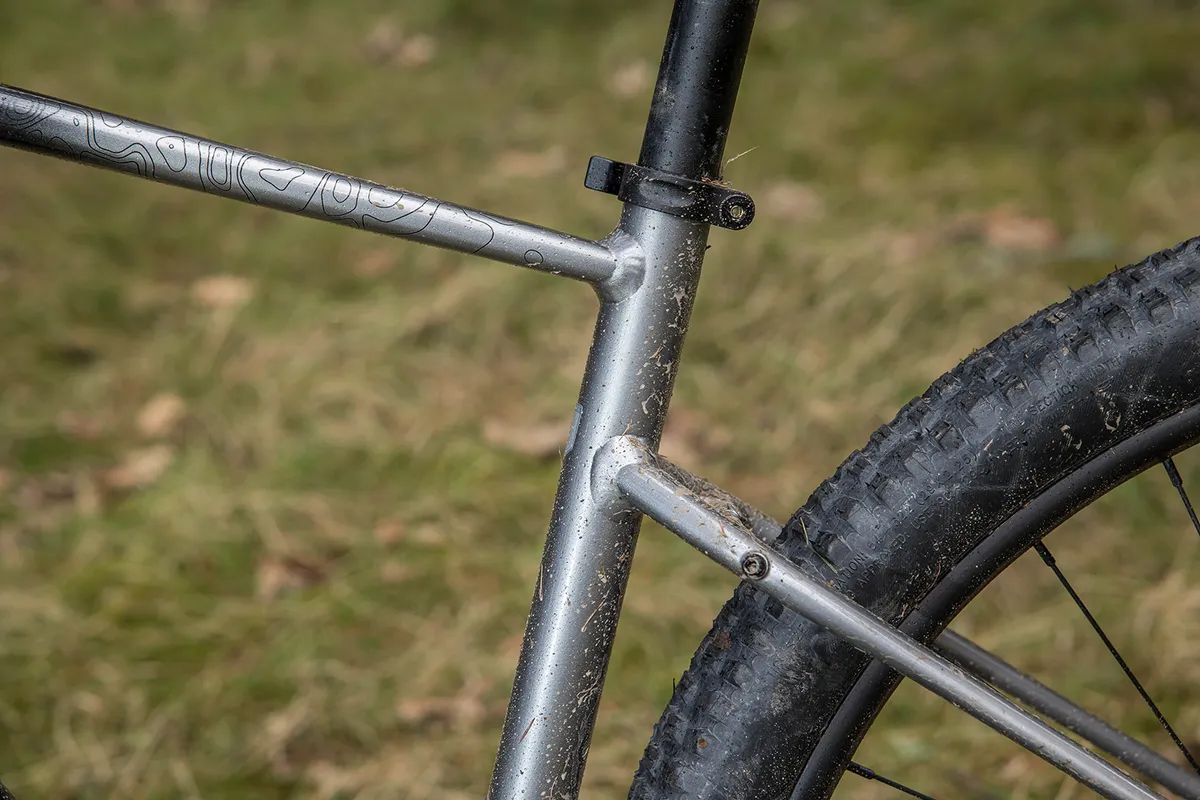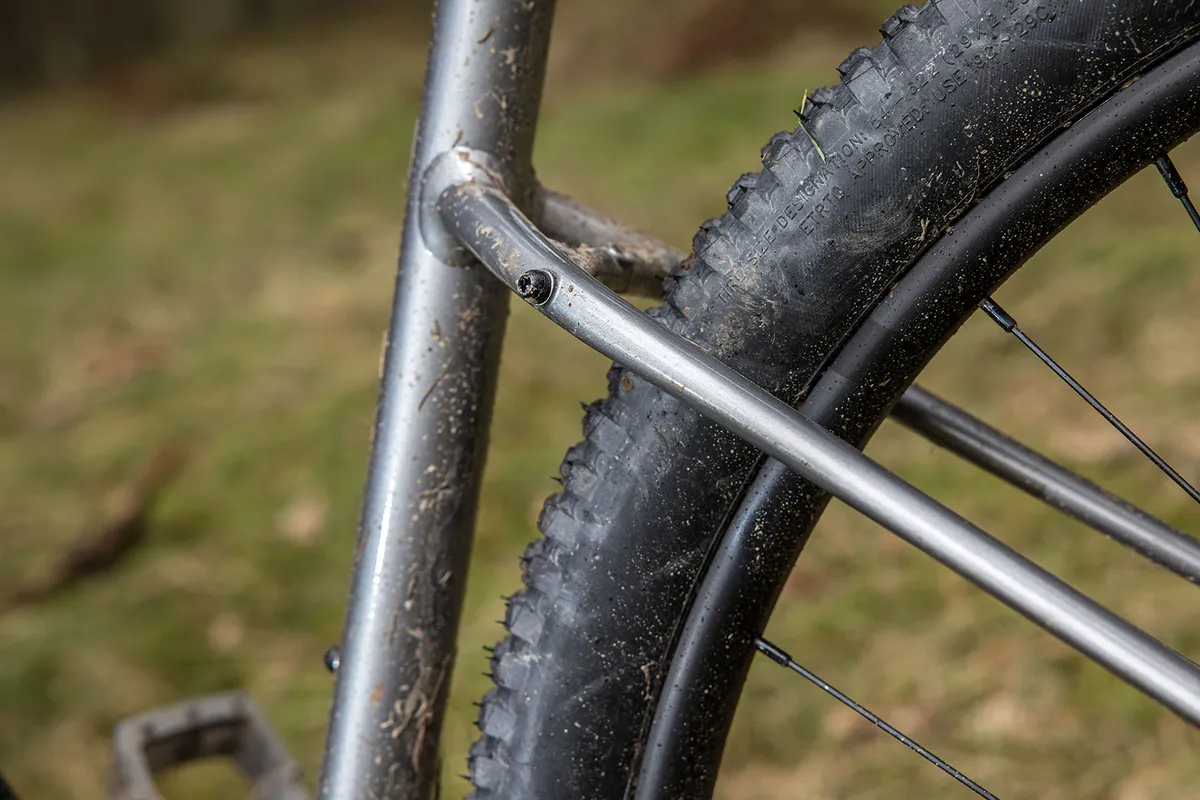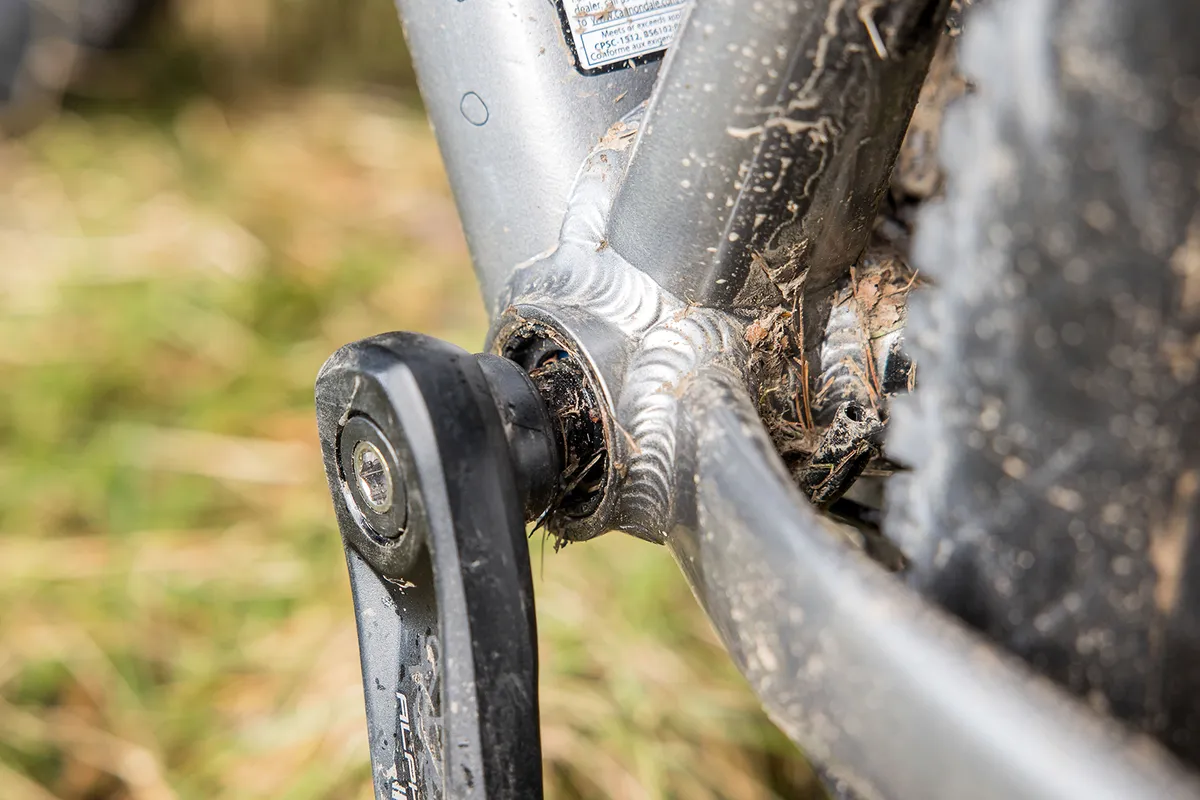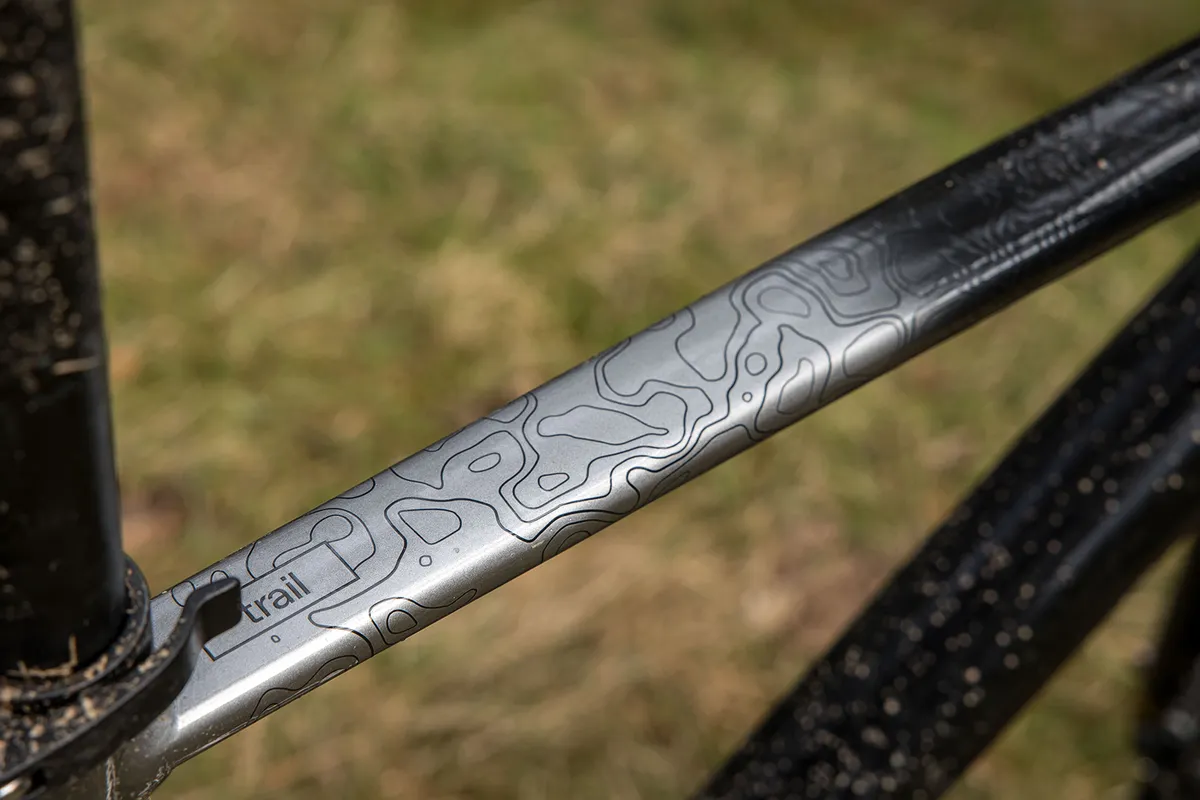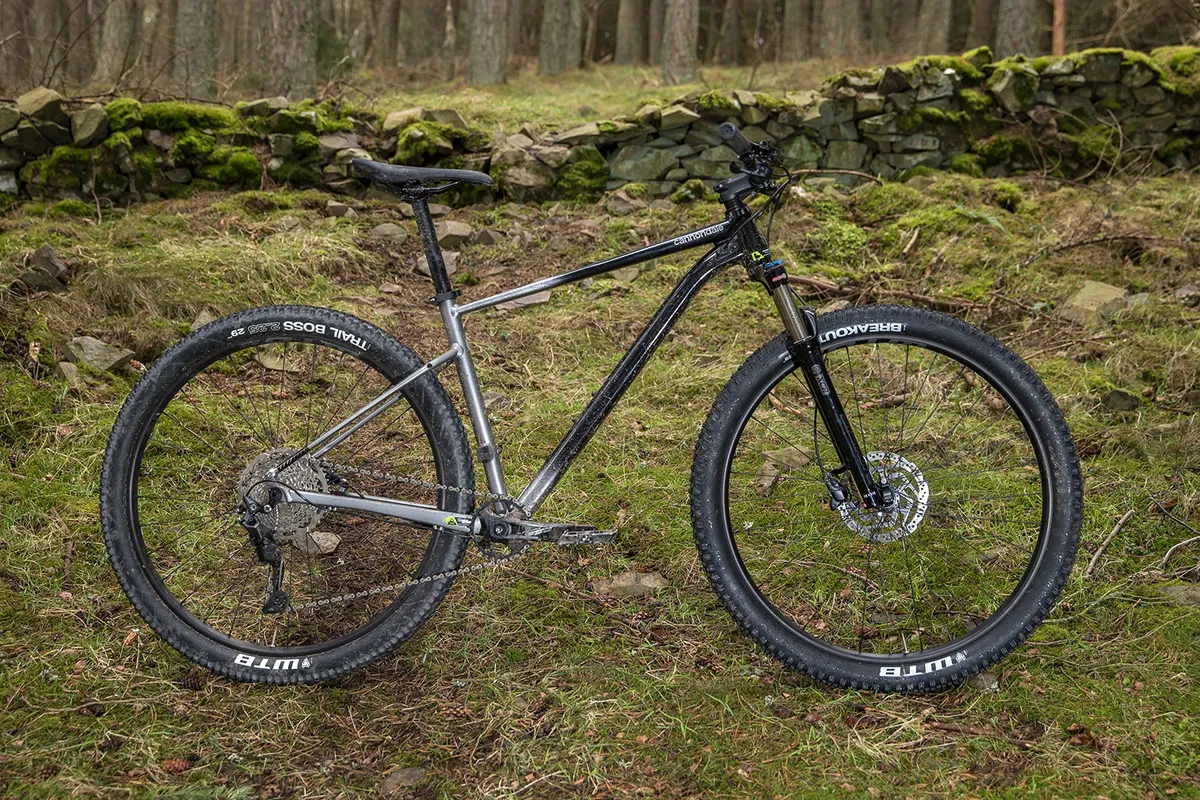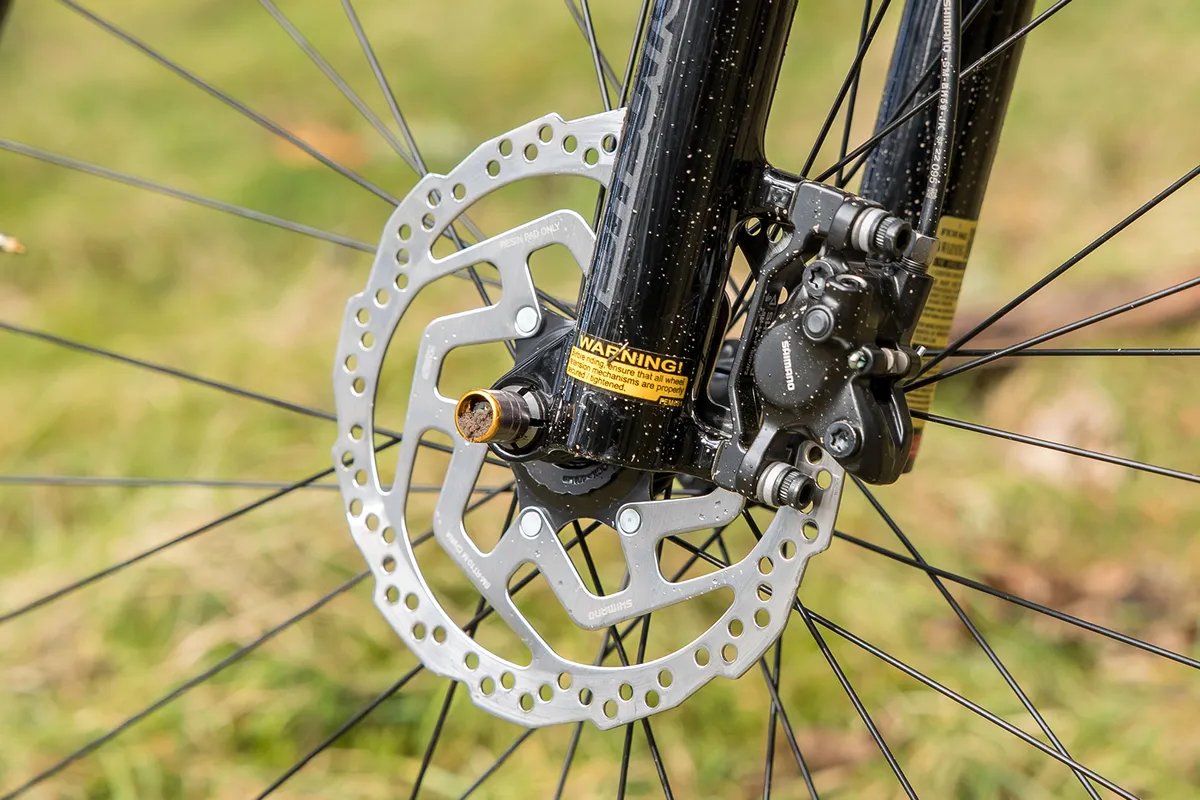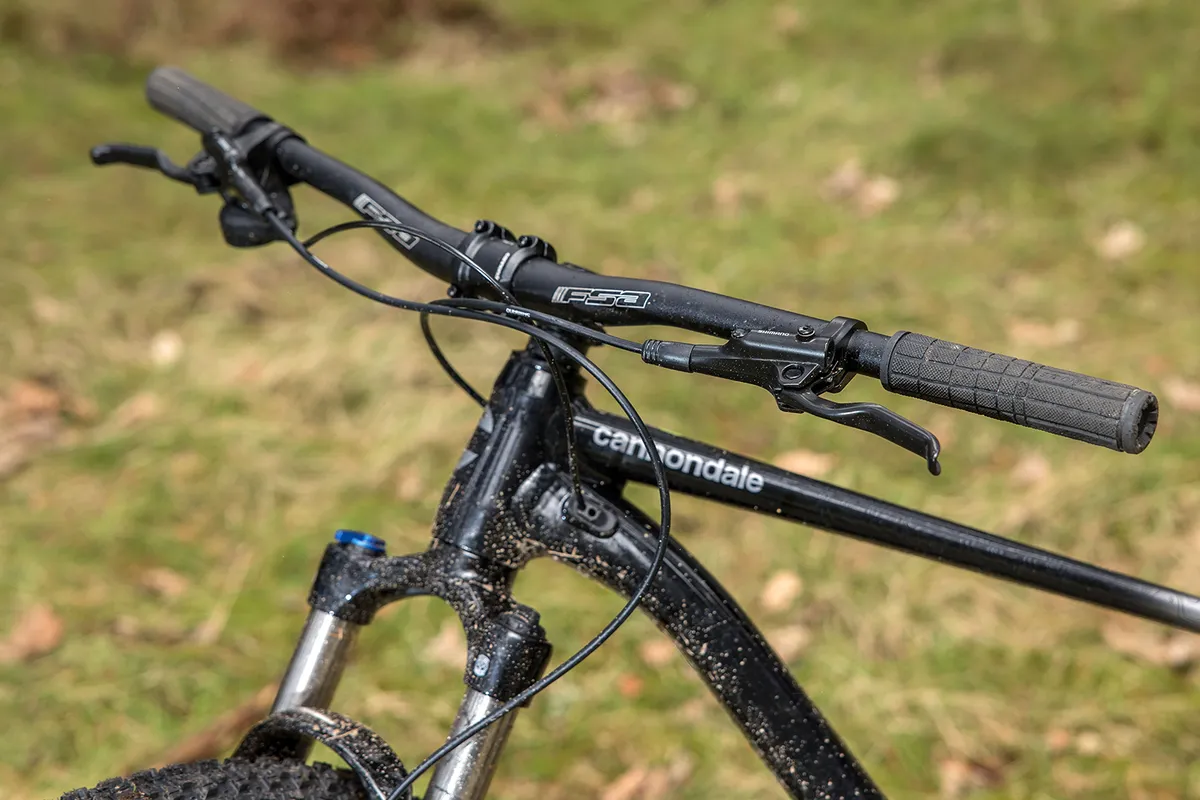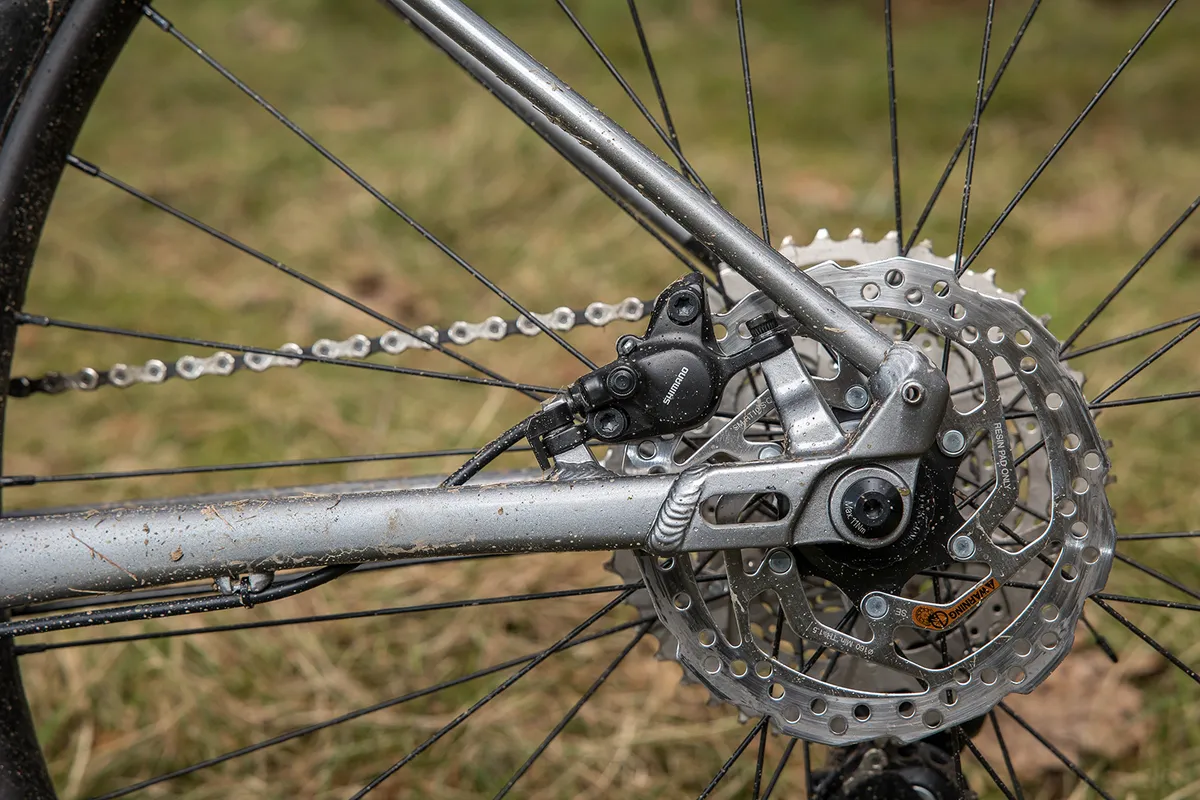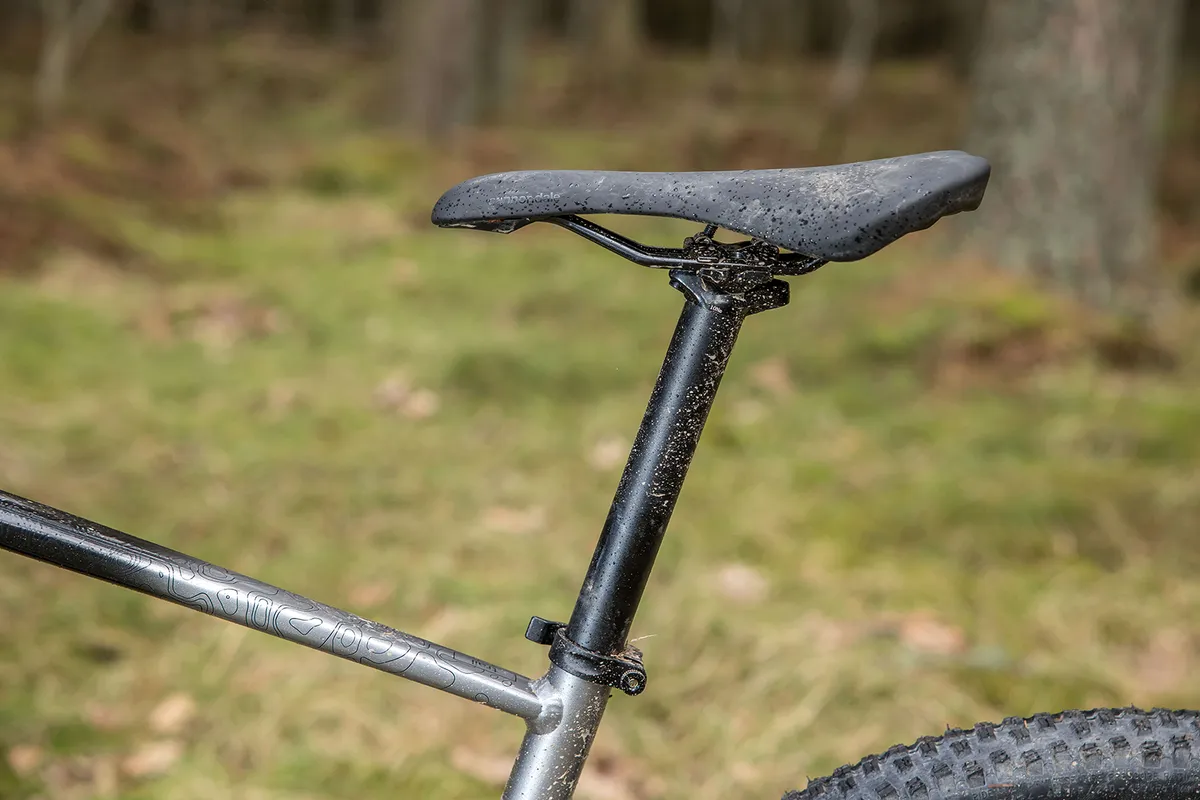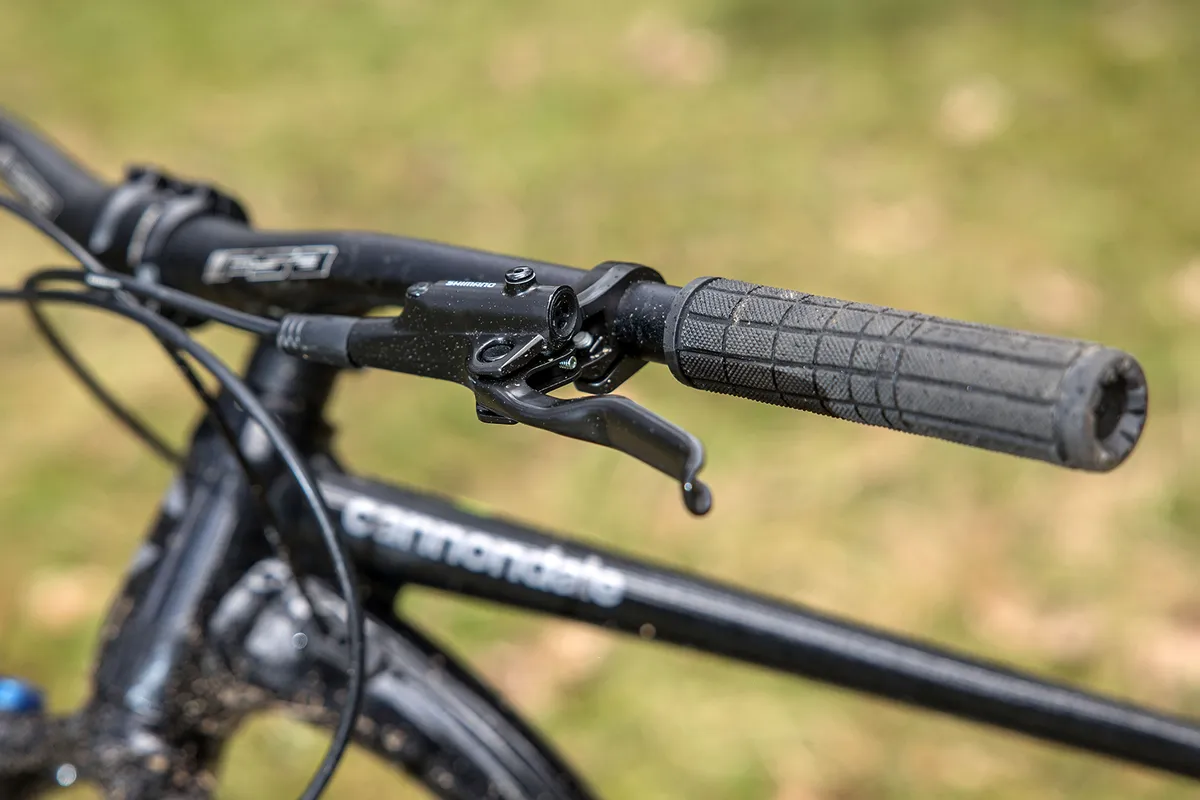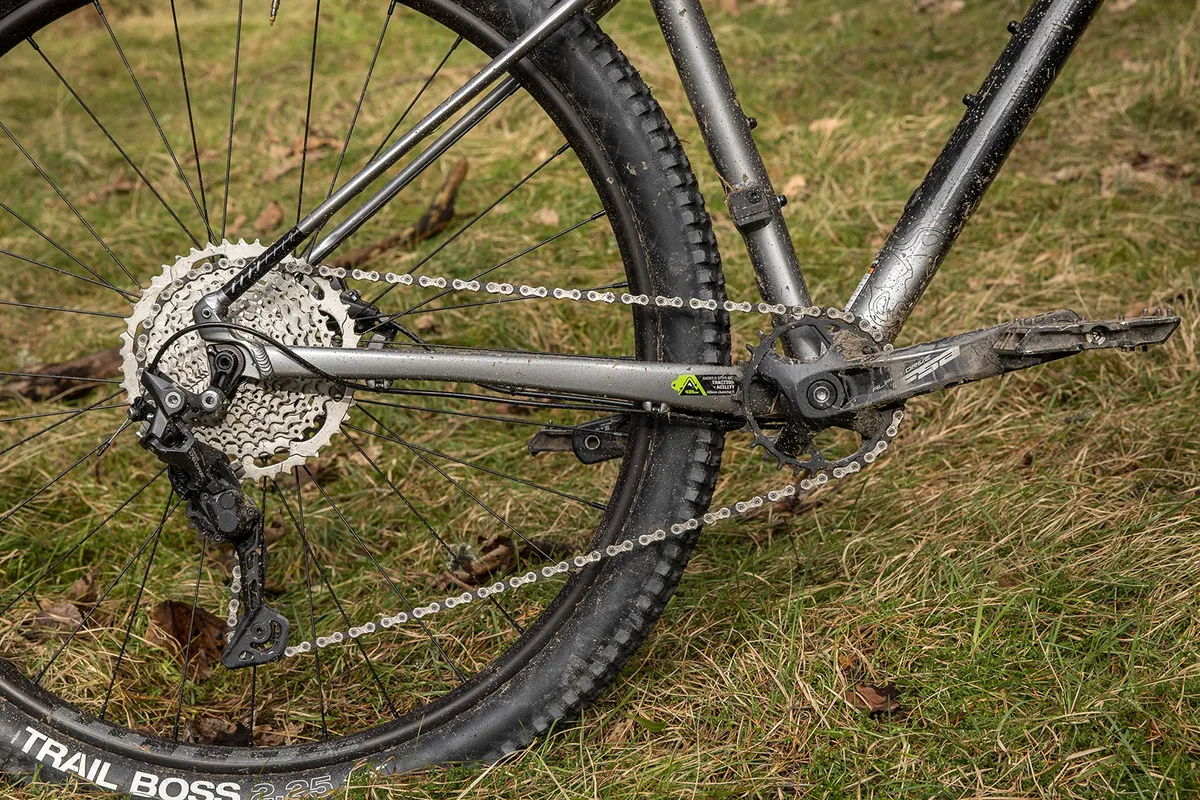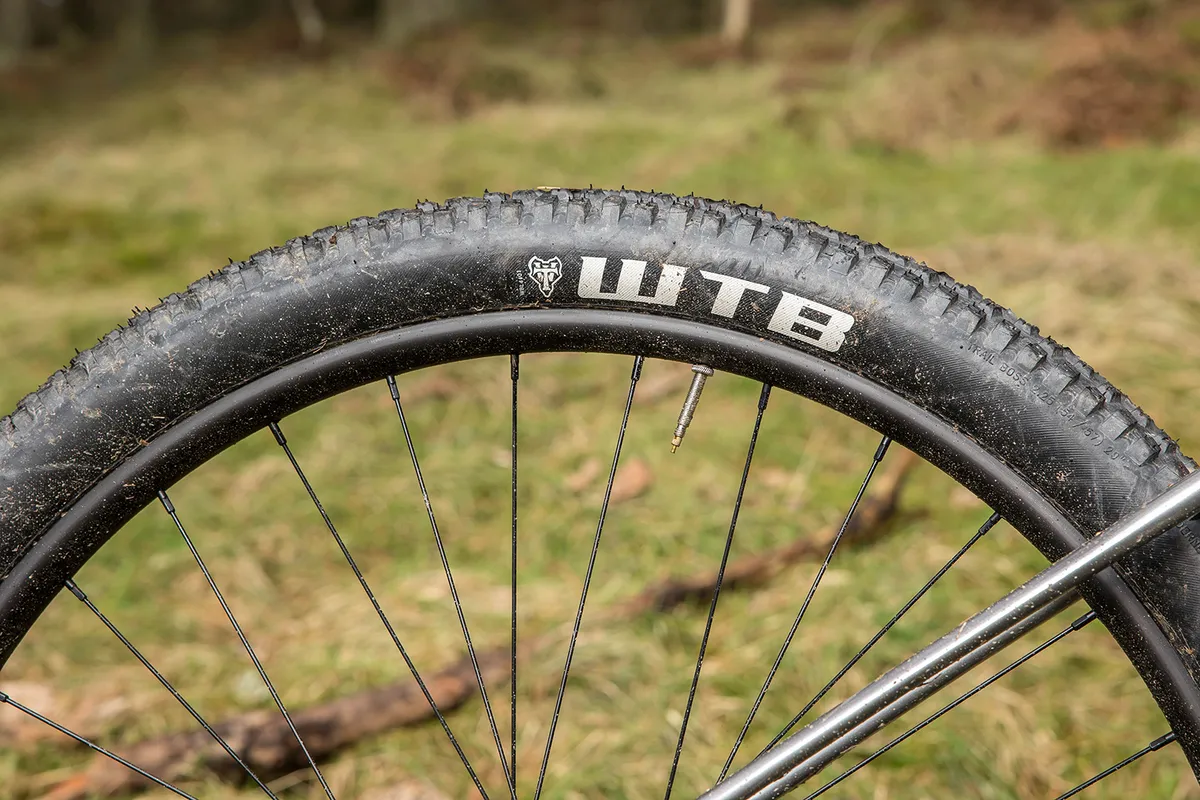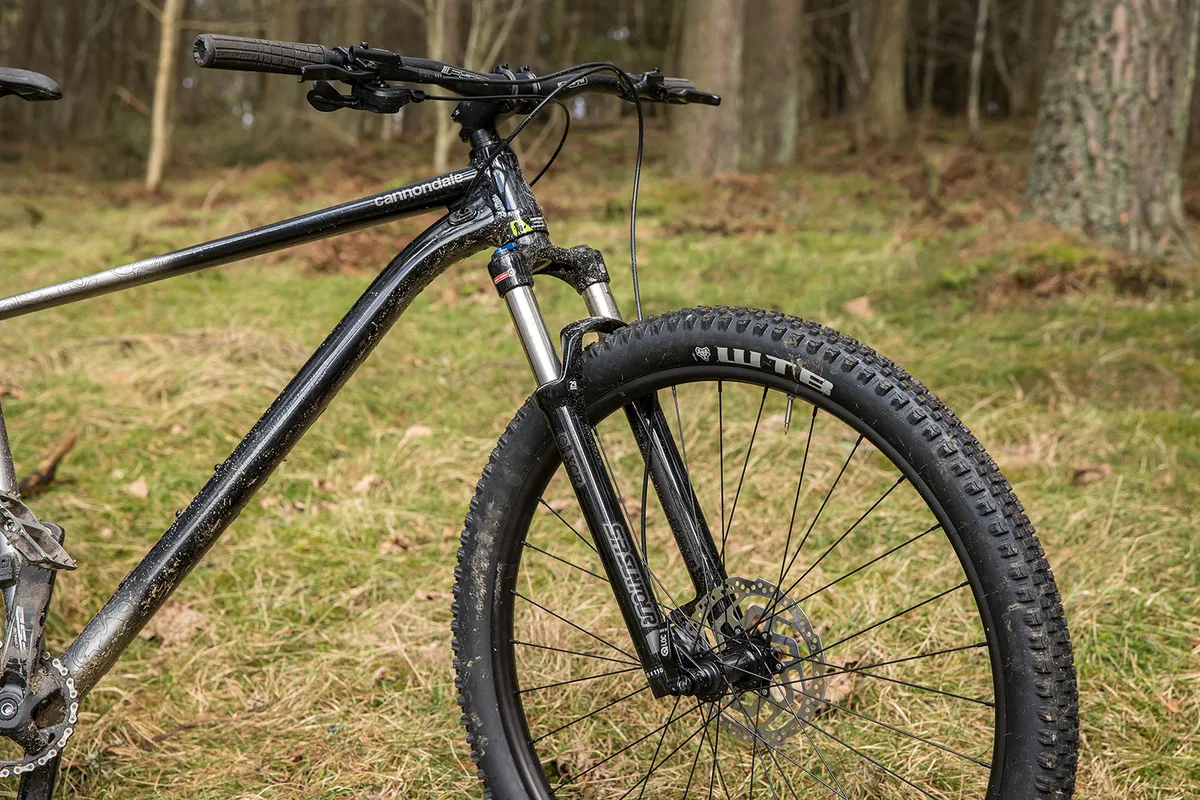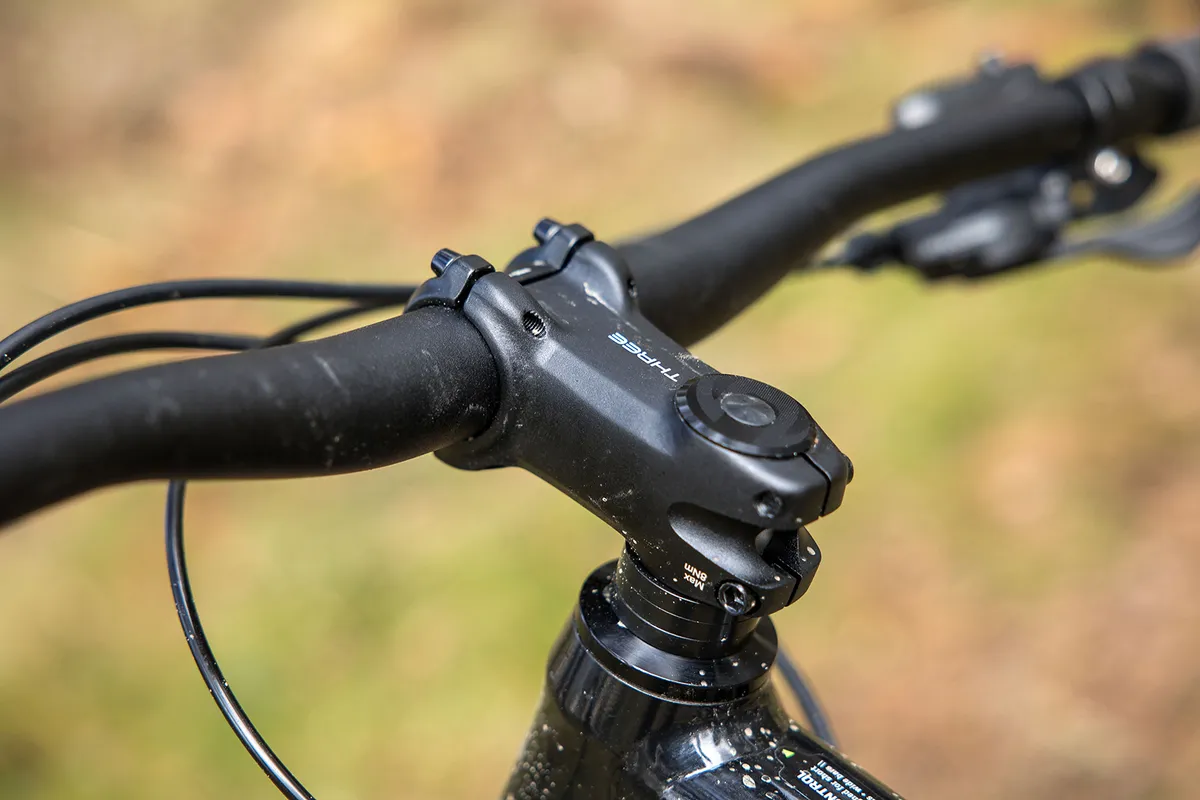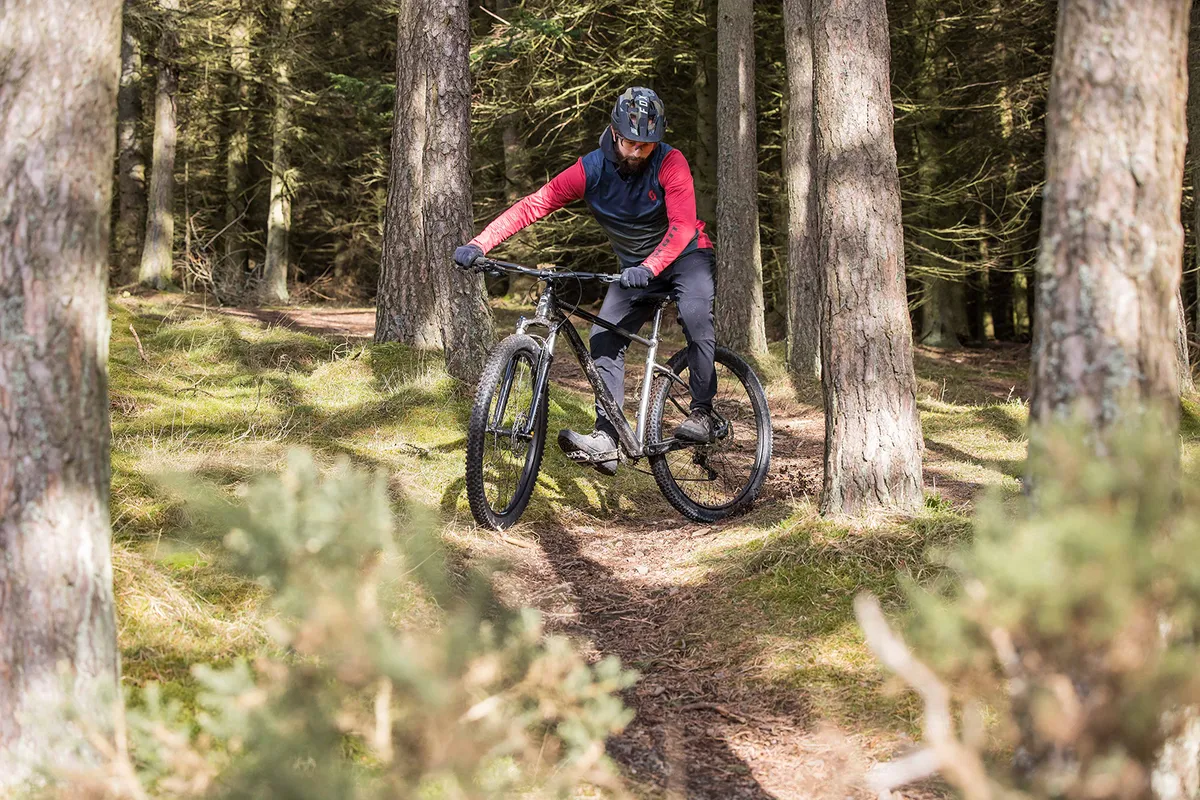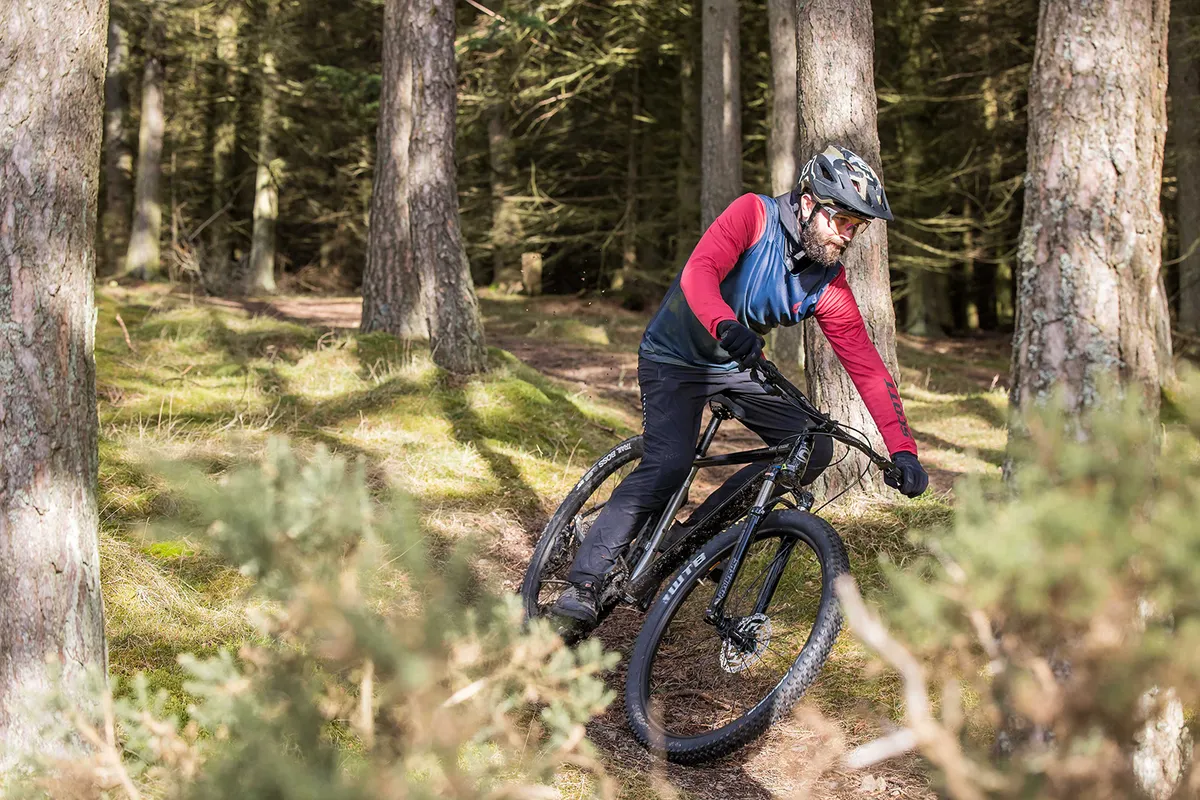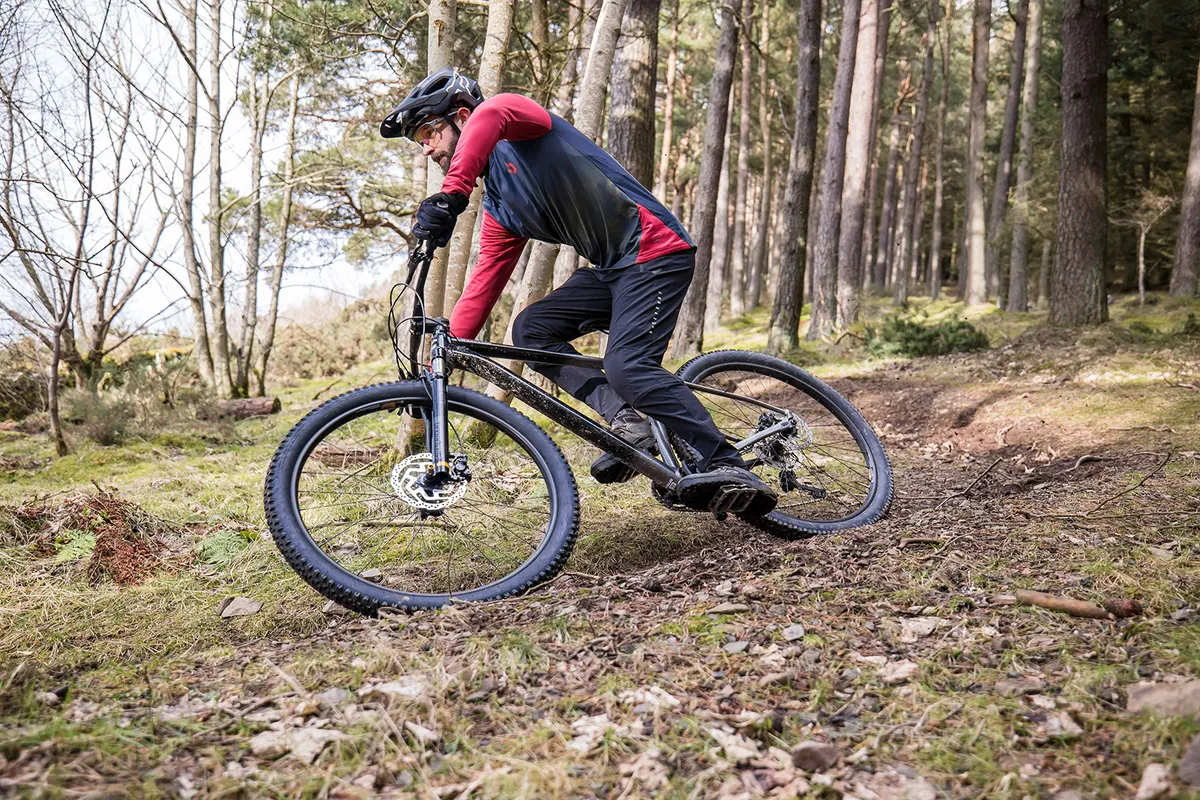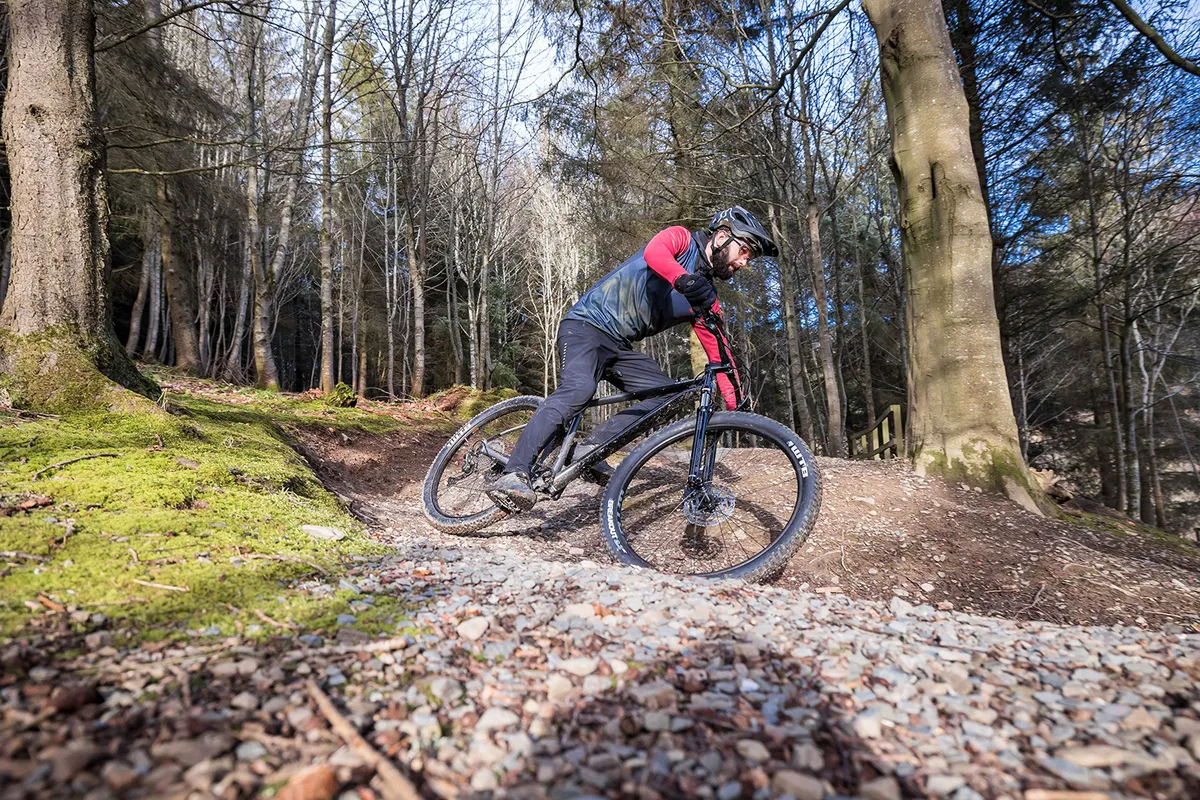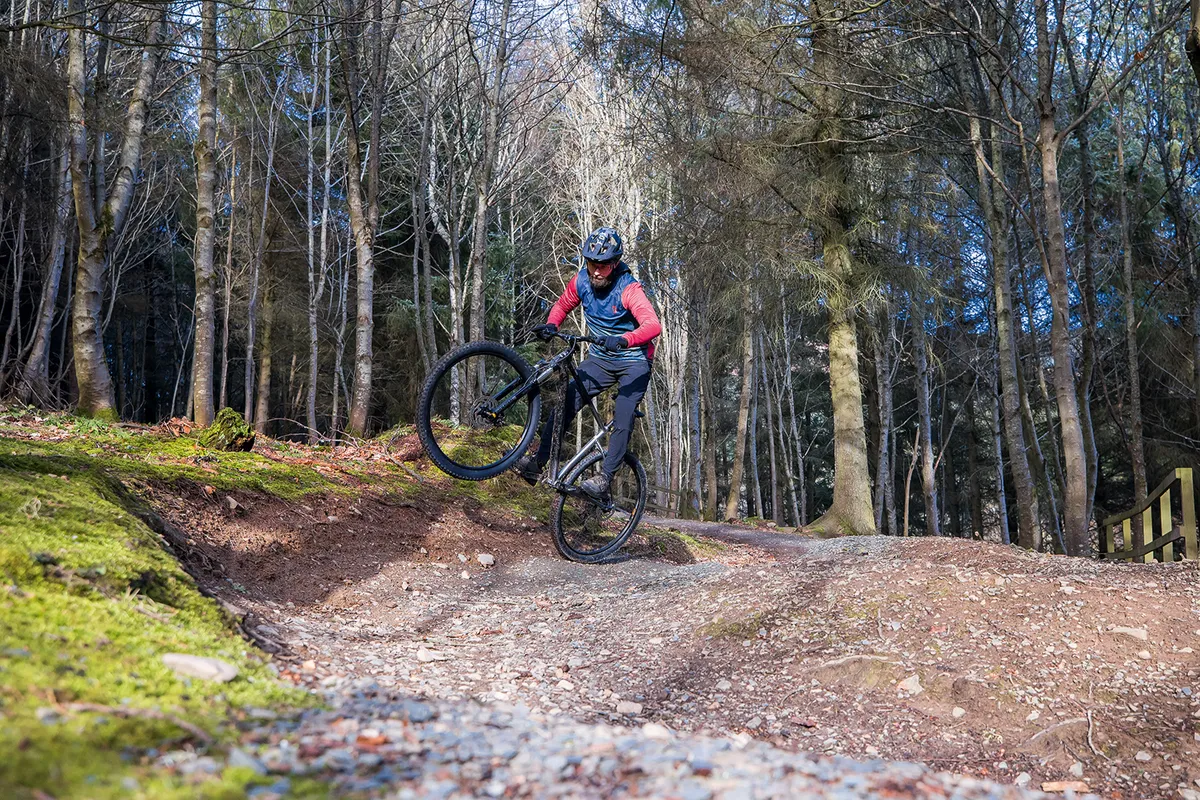Although Cannondale says the Trail SE 4 is designed primarily for low-impact trails, gravel roads and leisure rides, its frame features and components – including Boost axle spacing, a 1x drivetrain and dropper post compatibility – hint that it’s capable of greater things.
It’s gone up in price since I started testing, but you do get a more refined package for the extra spend.
Cannondale Trail SE 4 frame and kit
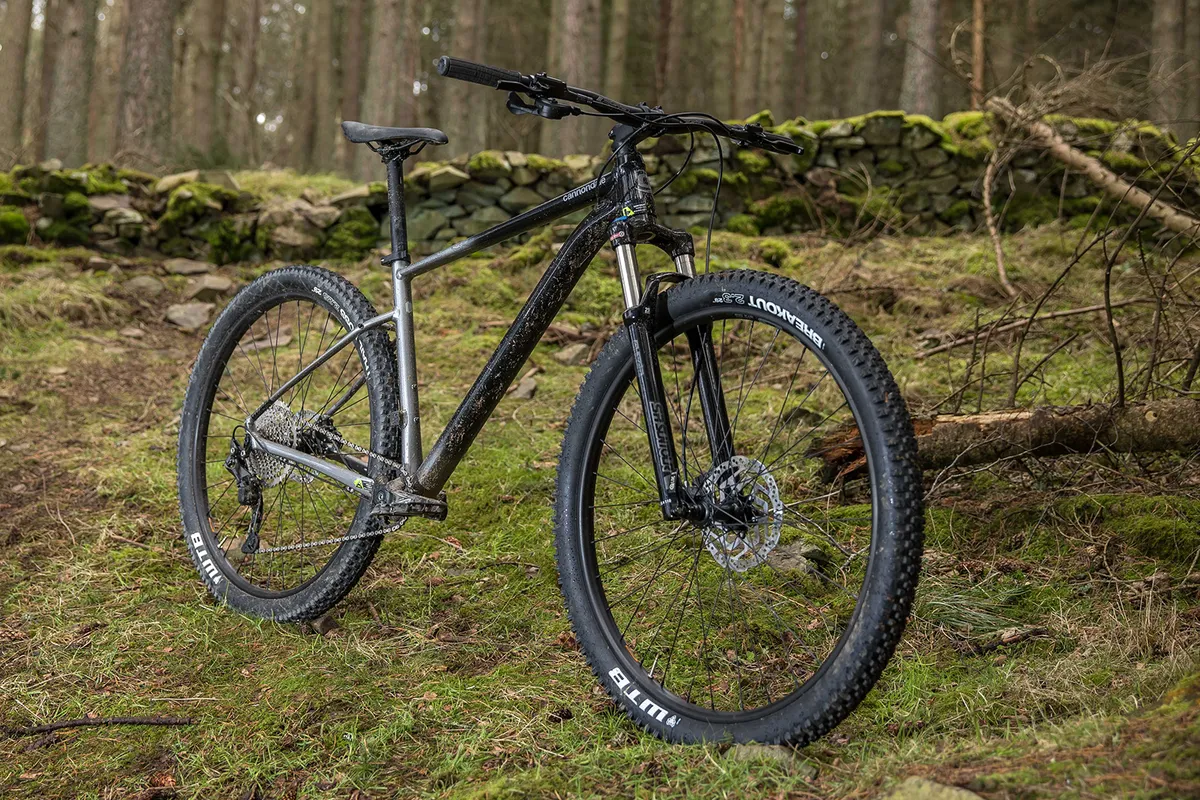
Built from Cannondale’s SmartForm C2 aluminium, the frame has sleek, butted tubes and smooth welds. The gear cables and rear brake hose are internally routed, entering near the head tube and exiting by the bottom bracket, assisting its clean lines, but adding a bit of rattle.
There’s no ignoring the striking dropped seatstays, claimed to help improve ride quality in conjunction with Cannondale’s SAVE ‘micro-suspension’ technology – basically, sections of the rear triangle are engineered to flex, to reduce trail buzz and improve comfort.
A tapered head tube makes the frame compatible with almost all modern forks, and it has Boost axles both front and rear, giving plenty of choice if you ever want to swap the wheels out.
This also means that if you later upgrade the fork, you won’t need to change the front wheel to match. Further future-proofing is provided by an internal routing port for a dropper post. Having two bottle cage mounts inside the front triangle is handy, too.
The large size I tested has a reasonably slack 66.5-degree head angle, and the 74-degree seat tube angle is slightly steeper than other similar bikes I had on test, which aids seated climbing.
This may be the most affordable model in the Trail SE range, but it still has a full Shimano Deore 1x10 drivetrain with 11-46t cassette.
The coil-sprung, 120mm-travel Suntour XCR fork has a 15×110mm Boost thru-axle. WTB STX i25 rims are laced to Shimano MT400 hubs and shod in WTB rubber. The cockpit and contact points are a mix of FSA and Cannondale-branded kit.
Cannondale Trail SE 4 geometry
| | S | M | L | XL |
|---|---|---|---|---|
| Seat angle (degrees) | 74 | 74 | 74 | 74 |
| Head angle (degrees) | 66.5 | 66.5 | 66.5 | 66.5 |
| Chainstay (cm) | 43.5 | 43.5 | 43.5 | 43.5 |
| Seat tube (cm) | 39 | 44 | 47 | 52 |
| Top tube (cm) | 56.6 | 59.8 | 62.6 | 65.3 |
| Head tube (cm) | 9 | 10 | 11 | 12 |
| Fork offset (cm) | 5.1 | 5.1 | 5.1 | 5.1 |
| Trail (cm) | 10.8 | 10.8 | 10.8 | 10.7 |
| Bottom bracket drop (cm) | 5.6 | 5.6 | 5.6 | 5.6 |
| Bottom bracket height (cm) | 31.8 | 31.8 | 31.8 | 31.8 |
| Wheelbase (mm) | 1,111 | 1,114 | 1,173 | 1,202 |
| Standover (cm) | 75.4 | 78.8 | 80.9 | 84.3 |
| Stack (cm) | 60.9 | 61.9 | 62.9 | 63.8 |
| Reach (cm) | 38.5 | 41.5 | 44 | 46.5 |
Cannondale Trail SE 4 ride impressions
True to Cannondale’s claims, the Trail SE has an overriding feeling of smoothness, its seatpost, seat tube and rear end visibly flexing when manipulated.
Seated climbing is comfortable, and only a limited amount of vibration and trail buzz is transferred to the rider, helping you to ‘feel’ the trail rather than become detached from it.
On the descents the Cannondale is equally as smooth, its flex stays helping to create the same grippy and planted feeling as a soft – but not underinflated – tyre. This means traction is abundant and it’s easy to make the bike grip in the turns.
The smooth-feeling chassis helped keep fatigue at bay on longer rides, further improving the riding experience.
While some of the bike’s smoothness can be attributed to its fancy seatstays, it could be a product of its spec, too, with the coil-sprung Suntour fork feeling particularly supple.
Testers weighing over 73kg found it a little too soft, and being a coil fork, the spring rate isn’t adjustable. This won’t be such a problem for lighter or less experienced riders, though.
The frame flex and undersprung fork mean that the steering isn’t perfectly accurate when the bike is pushed hard in high-speed, trail-centre style turns, but at slower speeds this is much less of an issue.
With a fairly traditional XC shape, the Trail SE works best for bridleway bashing and blue-graded trail-centre loops. Thanks to its longish top tube and low-feeling front end, it has a fairly aggressive, low-down riding position when seated, but feels much more upright when standing on the pedals, in part due to its short reach (440mm on the large).
The geometry never feels too extreme, though, nor compromises how it rides. On the climbs it takes a lot for the front wheel to wander, and on the descents I never felt like its handling was too quick to control.
The WTB Breakout/Trail Boss tyre combo grips well on trail-centre surfaces and even polished rock, but on very claggy terrain traction is limited.
The Deore drivetrain (that uses a SunRace cassette) has enough gear range for the Trail SE 4 to scale most climbs, and the Shimano Alivio brakes are solid-performers, contributing to how smooth it feels on the trail.
How we tested
Bike brands are forever striving to offer the most performance and best value they can. While the pandemic and Brexit are clearly having a negative impact on prices, today’s sub-£1k bikes appear to represent a big leap forwards in terms of both parts and geometry, compared to their three- or four-year-old couterparts.
If these improvements translate to better performance on the trail, it’s great news for buyers on a budget.
We tested our four hardtails on a mix of the trails they’re most likely to be ridden on, ranging from fireroads and bridleways through to more technical trail-centre loops and singletrack, to find out exactly where they excel and where their limits are.
Also on test
- Carrera Fury
- Specialized Rockhopper Comp 29 2X
- Vitus Nucleus 29 VRS
Product
| Brand | cannondale |
| Price | 900.00 GBP,1150.00 USD |
| Weight | 14.1900, KILOGRAM (L) - |
Features
| Fork | SR Suntour XCR coil, 120mm (4.7in) travel |
| br_stem | Cannondale 3, 65mm |
| br_chain | KMC X10 |
| br_frame | SmartForm C2 aluminium alloy |
| Tyres | WTB Breakout 29x2.3in (f), WTB Trail Boss 29x2.25in (r) |
| br_brakes | Shimano MT200, 180/160mm rotors |
| br_cranks | FSA Alpha Drive, 30t |
| br_saddle | Cannondale Ergo XC |
| br_wheels | WTB STX i25 TCS alloy rims on Shimano MT400 hubs |
| br_headset | Integrated |
| br_shifter | Shimano Deore M4100 |
| br_cassette | Shimano Deore M4100, 11-46t |
| br_seatpost | Cannondale 3 rigid |
| br_gripsTape | Cannondale Dual-Density |
| br_handlebar | FSA Alloy Riser, 760mm |
| br_bottomBracket | Square-taper, sealed cartridge |
| br_availableSizes | S, M, L, XL |
| br_rearDerailleur | Shimano Deore M4100 (1x10) |
